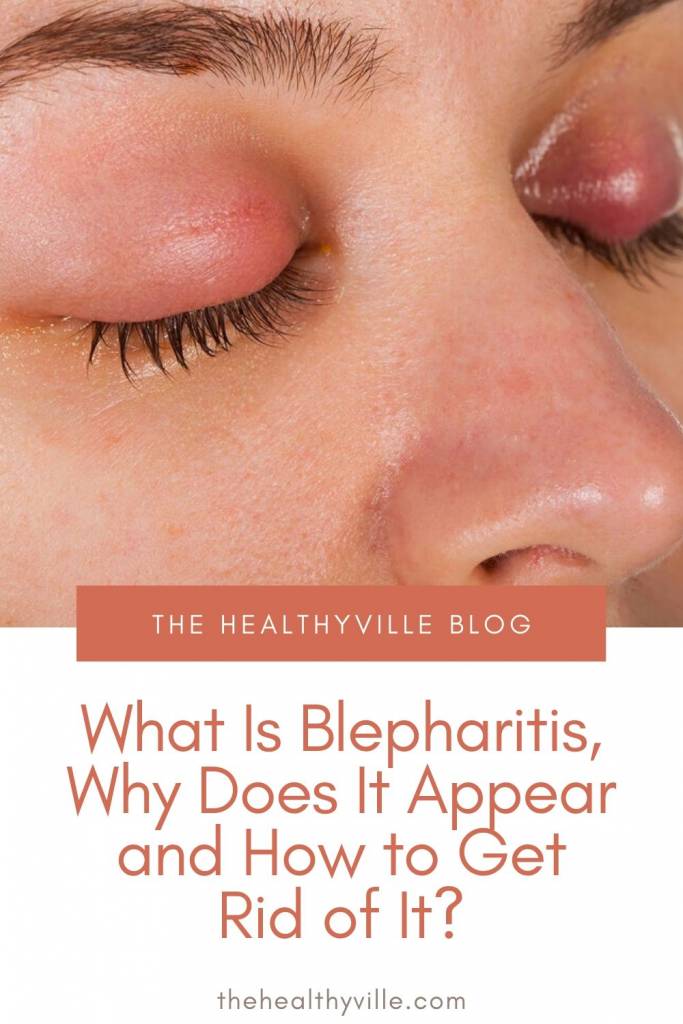What is blepharitis? What causes it to appear? Is it dangerous? How can you eliminate it for good? Find out all the answers at a glance!
Blepharitis is a very common and usually benign pathology of the eye. Its clinical manifestations include itching, dryness of the eyelid and small scaling. We’ll tell you more about it.
Blepharitis is inflammation of the eyelids. It is a common pathology that can affect any person, causing different and annoying symptoms, among which desquamation, itching and dryness stand out. Here we tell you some interesting facts about this condition.
What is blepharitis?
Blepharitis is inflammation of the eyelids; it affects, above all, the edge of them. In fact, this happens because it is here that the eyelash follicles are and the secretory glands between them.
In the follicles and secretion that these glands produce, different types of bacteria are present naturally. When there is a failure in the drainage of the secretion, and this accumulates, it becomes the perfect environment for bacteria to proliferate excessively.
In fact, such uncontrolled bacterial proliferation is what causes eyelid inflammation. Normally, blepharitis is a mild and common process, but, as always, if left unattended it can lead to some complications.
Who does it affect and what does it relate to?
Blepharitis can affect anyone, regardless of sex or age. Even so, it has been more related to certain factors or situations. Some of them are:
- Contact lens abuse.
- Irritant agents such as smoke, toxic, chemicals, etc.
- Blond people, with clear or thin skin and clear eyes, seem to have a greater tendency to blepharitis.
- In individuals with a tendency to produce fat in the hair and skin, with acne or rosacea, this phenomenon has also been observed more.
- It is related to atopic dermatitis and seasonal allergies.
Symptoms of blepharitis
This infection produces general symptoms of eye irritation. Some of them may be:
- Itching and dry eyes.
- Flaking of the eyelid edge, which produces what looks like “dandruff” in the eyelashes.
- Watery eyes, with burning sensation.
- Sensation of a foreign body or grit in the eyes.
Sometimes, this condition can lead to loss of eyelashes. Also, if the infection is not controlled, styes or chalazions may appear, which are nothing more than cysts with pus in some areas of the eyelids that you have to treat.
Diagnosis and treatment
Blepharitis is usually a chronic process, that is, it has no cure. Although this is so, it is possible to achieve almost total symptomatic control, which allows the patient to lead a normal life. The basic pillars of the treatment will be:
- Avoid exposing yourself to situations or substances that may have triggered the superinfection.
- Maintain the hygiene of the eyelids.
The cleaning of the eyelids, a fundamental point, will consist of daily washing with neutral soap and cotton swabs. In fact, these will help remove the small scabs or scales that have formed, and eliminate the accumulation of gland secretion from the eyelid.
This measure is the one that has proven to be most effective, both in the treatment of an outbreak and in the prevention of the appearance of new blepharitis crises. On some occasions, the specialist will decide to add to the treatment some drugs in eye drops or ointment that can help in the most aggressive outbreaks.
In summary
Blepharitis is a common and usually benign pathology. Even so, because of the annoying symptoms it presents and the possibility that it leads to certain complications, it will always be advisable to consult a specialist. This will give the necessary instructions to control the symptoms and, if necessary, add a more specific treatment.
Don’t forget to SHARE what is blepharitis and how to treat it with your friends and family on your social networks!

